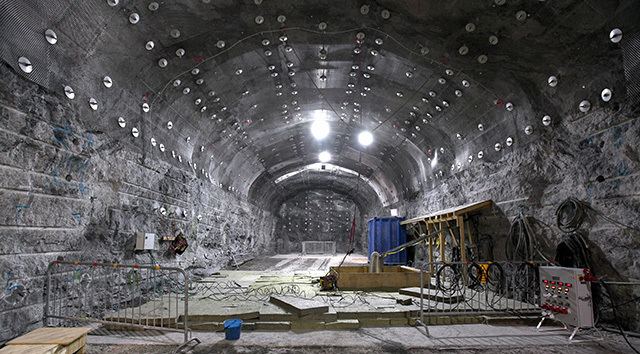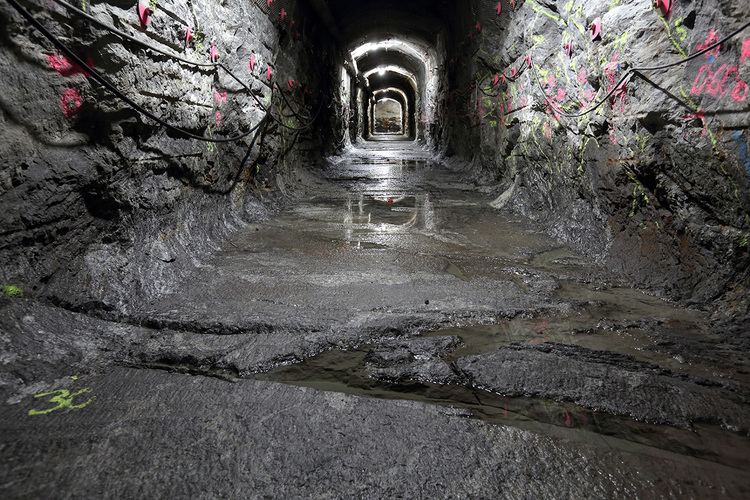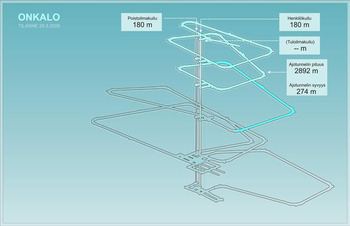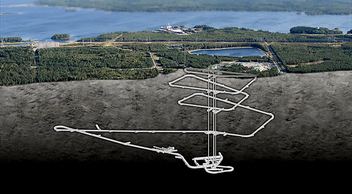 | ||
The Onkalo spent nuclear fuel repository is a deep geological repository for the final disposal of spent nuclear fuel, the first such repository in the world. It is currently under construction at the Olkiluoto Nuclear Power Plant in the municipality of Eurajoki, on the west coast of Finland, by the company Posiva. It is based on the KBS-3 method of nuclear waste burial developed in Sweden by Svensk Kärnbränslehantering AB (SKB).
Contents

History

After the Finnish Nuclear Energy Act was amended in 1994 to specify that all nuclear waste produced in Finland must be disposed of in Finland, Olkiluoto was selected in 2000 as the site for a (very) long-term underground storage facility for Finland's spent nuclear fuel. The facility, named "Onkalo" (meaning "small cave" or "cavity") is being built in the granite bedrock at the Olkiluoto site, about five km from the power plants. The municipality of Eurajoki issued a building permit for the facility in August 2003 and excavation began in 2004. A construction license was issued 12 November 2015. As of November 2015 Posiva expects construction to begin in 2016 and operations in 2023.
Construction

The facility is being constructed by and will be operated by Posiva, a company owned by the two existing producers of nuclear power in Finland, Fortum and TVO. (Fennovoima, a company which is currently planning its first nuclear reactor, is not a stockholder of Posiva.)
The facility's constructions plans are divided into four phases:


Once in operation, the disposal process would involve putting twelve fuel assemblies into a boron steel canister and enclosing it into a copper capsule. Each capsule would then be placed in its own hole in the repository and packed with bentonite clay. The estimated cost of this project is about €818 million, which includes construction, encapsulation, and operating costs. The State Nuclear Waste Management Fund has saved approximately €1.4 billion from charges for generated electricity.
The Onkalo repository is expected to be large enough to accept canisters of spent fuel for around one hundred years, i.e. until around 2120. At this point, the final encapsulation and burial will take place, and the access tunnel will be backfilled and sealed.
Criticism
In 2012, a research group at the Royal Institute of Technology in Stockholm, Sweden, published research that suggests that the copper capsules are not as corrosion-proof as the companies planning the repositories claim. See KBS-3.
Treatment in media
Danish director Michael Madsen has co-written and directed a feature-length documentary Into Eternity where the initial phase of the excavation is featured and experts interviewed. The director's special emphasis is on the semantic difficulties in meaningfully marking the depository as dangerous for people in the distant future.
